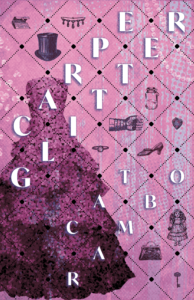 A bajillion years ago, when you could send the Science Fiction Book Club $.11 and get 11 books back, I signed up, receiving a fabulous armful particularly valuable back in the days when the Internet was just kicking off.
A bajillion years ago, when you could send the Science Fiction Book Club $.11 and get 11 books back, I signed up, receiving a fabulous armful particularly valuable back in the days when the Internet was just kicking off.
One of the 11 was P.C. Hodgell’s fantasy novel, Godstalk. I recently reread it when I found it and its sequel were available in the form of a single e-book, The God Stalker Chronicles.
I loved that book for its density of innovation as well as its creation of Tai-tastigon, a city is vividly alive as any other in speculative fiction, as evocative as Ambergris or Gormenghast, as alluring and perilous as Fritz Leiber’s Lankhmar, as historied as Minas Tirith or fictional London or any of the cities George R.R. Martin evokes so well.
And I loved it for its heroine, Jamethiel. She comes to the reader as a semi-amnesiac, unsure of exactly what lies in her past and bearing, as such heroes and heroines often too, a magical object. Or agical objects. Those objects shaped my naming convention for magical objects and remain as lovely as when I first encountered them: the Ivory Knife, the Book Bound in Pale Leather and the Serpent Skin Cloak.
Their bearer enters the city of Tai-tastigon and swiftly is embroiled in the doings of several groups of characters, including the staff of a local tavern, the Thieves Guild, assorted priests and gods/goddesses, the rooftop-dwelling Cloudies, and assorted bandits, allies, and felines, all of whom turn out to be more connected and in more mysterious ways than one would expect. I am an inveterate re-reader. More so in the days when I didn’t have the ability to download just about anything from the Internet, but even so still a habit I indulge in. Godstalk stood up to multiple rereads over the decades and shaped my expectations for fantasy novels ever since. It set a pretty high bar.
I loved Godstalk to death and managed to find its sequel Dark of the Moon much later. It always frustrated me not be able to find others in the series. Therefore I was overjoyed to find out that that not only were there more in the series but that they were available in electronic form. I’m halfway through the third book, Seeker’s Bane, and looking forward to the next three.
One of the things that makes returning to the book so satisfying is the heroine Jamie. Her flaws as well as her strengths are written deeply, shaping her actions inevitably and eloquently. The author takes us deep into Jamie’s head, letting us watch her development as well as her struggle with her complicated existence.
The main source of Jamie’s struggle is her adherence to the Kencyr code of honor, a trait that makes her a hero in the classic sense, someone to look up to and emulate, and which often talks directly about the nature of honor. Here’s a passage I just hit in Seeker’s Bane:
Trust honor, Immalai had said.
yes. For her, balanced on the knife’s edge, honor was more than life, its loss infinitely worse than death. And part of honor was taking responsibility for one’s actions and choices, over and over, as long as one acted or chose.
Jamie is complex and compelling. Her twin brother, Tori, begins to share the viewpoint in the second book and is interesting in his own right, but Jamie is rightly the core of the series. As I’m reading through the series, it’s a pleasure as a reader to watch her history unfold even as her personality is sharpened and shaped. As a writer, it’s a terrific lesson on the effectiveness of going deep into a character’s head.
Fantasy books and series that share this depth of character development:
- Carol Berg’s Collegia Magica
- Jo Clayton’s Diadem series
- Amanda Downum’s Necromancer Chronicles
- Tanith Lee’s The Birthgrave
- Fritz Leiber’s Fafhrd and the Grey Mouser
- Any book by Martha Wells, but particularly The Element of Fire






